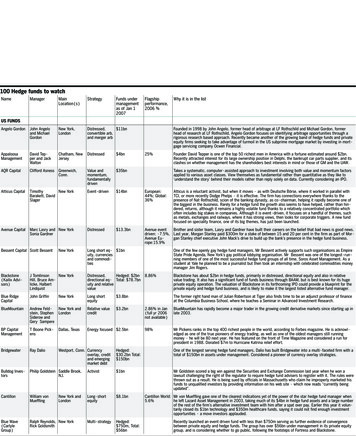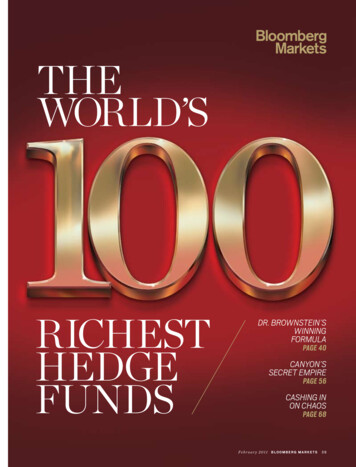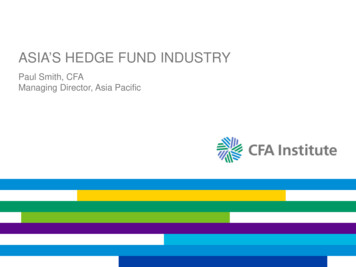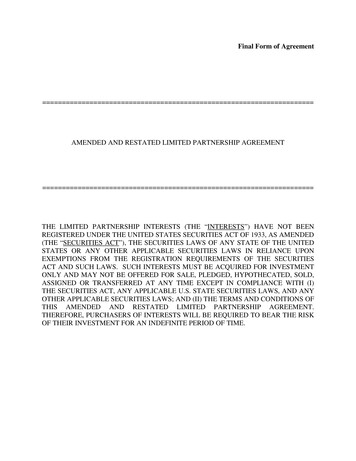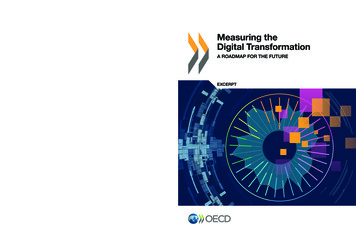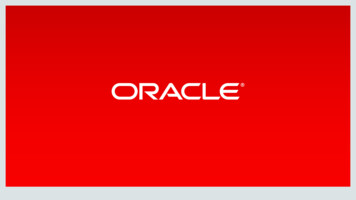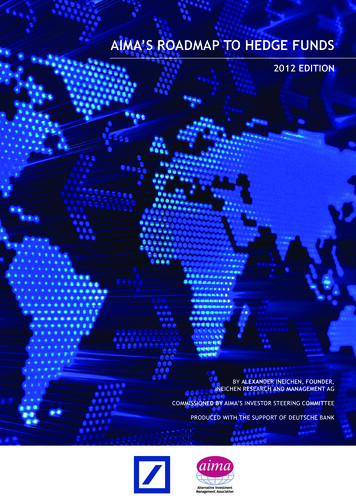
Transcription
AIMA’S ROADMAP TO HEDGE FUNDS2012 EDITIONBY ALEXANDER INEICHEN, FOUNDER,INEICHEN RESEARCH AND MANAGEMENT AGCOMMISSIONED BY AIMA’S INVESTOR STEERING COMMITTEEPRODUCED WITH THE SUPPORT OF DEUTSCHE BANK
AIMA’S ROADMAP TO HEDGE FUNDS – 2012 EDITION
Table of ContentsForeword . 3Executive summary . 6Preface . 7What exactly is a hedge fund? . 11Introduction and definition . 11The hedge fund industry . 13Performance . 13Assets under management . 16Flow of funds . 22Concluding remarks: what exactly is a hedge fund? . 23From relative to absolute returns . 25Managing tracking risk versus total risk . 25What exactly is risk? . 28The boiling frog syndrome . 29Risk versus uncertainty . 30What exactly is risk management? . 32The musical chairs effect . 33Prevention versus cure . 34Compounding matters . 37Concluding remarks: from relative to absolute returns . 39Value proposition of hedge funds . 41Active versus passive risk management . 41The Fundamental Law of Active Management. 45The idea of asymmetric returns . 46Active risk management . 50Applicability and adaptability of skill . 50Intellectual property versus adaptability of skill . 52Concluding remarks: value proposition of hedge funds . 54Demystifying all hedge funds . 56Myths and misconceptions . 56Myth: all hedge funds gamble . 56Myth: all hedge funds always hedge . 57Myth: all hedge funds are risky . 57Myth: all hedge funds are speculative. 58Myth: all hedge funds charge high fees . 59Myth: all hedge funds generate strong returns in all market conditions . 61Myth: the lesson of LTCM is not to invest in hedge funds . 62Myth: the Madoff fraud is a hedge fund scandal . 63Myth: all hedge funds increase systemic risk of financial markets . 63Myth: selling short is the opposite of going long . 65Myth: it’s all alpha . 66Myth: there is no absolute return revolution . 67Concluding remarks: demystifying all hedge funds . 68Hedge fund investing . 70Investment process . 70Manager selection and monitoring . 71Portfolio selection and monitoring. 73Fund of hedge funds . 80Investment philosophy of a fund of funds manager . 81Risk management experience and other intangibles . 82Hedge fund operations and related third-party partners . 90The role of prime brokers . 90Hedge fund operations and outsourced partners . 91Impact of Lehman Brothers . 92Managed accounts . 92Concluding remarks: hedge fund investing . 94
AIMA’S ROADMAP TO HEDGE FUNDS – 2012 EDITIONStrategies . 96Classifying hedge funds . 96Returns, volatility, Sharpe ratios and all that . 100Valuation . 102Leverage . 103Liquidity . 107Fat tails . 111Concluding remarks: strategies . 117Closing remarks . 119Hedge funds: risky game or game of risk? . 119Appendix 1 .The origins of hedge funds .Some technical aspects about tail risk .Failure, survival and the Adaptive Market Hypothesis .Working example of how leverage can be used .124124128132135Appendix 2 . 137Practical next steps . 137Appendix 3: Glossary and references . 139Definitions of hedge fund industry stakeholders . 139Bibliography . 141Appendix 4: About AIMA, the Sponsor and Principal Author .AIMA .AIMA Investor Steering Committee .Deutsche Bank .Author .Alexander Ineichen, CFA, CAIA, FRM .2145145145146147147
AIMA’S ROADMAP TO HEDGE FUNDS – 2012 EDITIONForewordAIMA’s original Roadmap to Hedge Funds quickly became the most-downloadedpublication in the association’s 22-year history, despite having been released at theheight of the global financial crisis in September 2008. Four years on, it remains apowerful guide to investors seeking to create and manage a hedge fund portfolio.Written in a wry, witty style, it was a success not only because it was the world’sfirst collaborative educational guide for institutional hedge fund investors, butbecause it demystified the hedge fund industry at a time when misconceptionsaround issues such as short-selling, fees, transparency and risk were widespread. Ithad a global readership and in 2010 was even translated into Chinese.Much clearly has changed in the four years or so since the original edition wasreleased. While much within the 2008 Roadmap remains relevant, there has been arecognition within AIMA and its Investor Steering Committee, which co-ordinatedthe original release as well as reviewing this edition, that the time had come for asubstantial update to be published. This edition is what emerged from thosediscussions.As with 2008, the new edition of the Roadmap has been authored by AlexanderIneichen, one of the leading authorities on hedge funds. Alexander started hisfinancial career back in the 1980s, and the Roadmap reflects his considerableknowledge. In addition to the Roadmap, he is the author of the most printedresearch publications in the documented history of UBS - “In Search of Alpha Investing in Hedge Funds” (October 2000) and “The Search for Alpha Continues - DoFund of Hedge Funds Add Value?" (September 2001). He is also the author of"Absolute Returns - The Risk and Opportunities of Hedge Fund Investing" (WileyFinance, October 2002) and “Asymmetric Returns - The Future of Active AssetManagement” (Wiley Finance, November 2006).Broadly speaking, what this new edition has set out to do is to explain thecontinuing relevance of hedge funds after the tumult of the last four years. All ofthe data from the 2008 edition have been updated, and Alexander has identifiednew trends and developments.It is worth recording that amid the upheaval, hedge funds in general haverecovered fairly well from the crisis. At the time of writing, the industry had justreached a new peak of 2.2 trillion in assets under management [1]. We believe thekey force behind this rebound has been the evolving hedge fund investor base.What is undeniable is that attitudes to hedge fund investing have changed since2008. Hedge funds are now a truly institutional product. Pension funds havebecome a lot more familiar with the asset class, and, as a result, continue to seekhedge fund investments as a means to diversify away from their traditionalbond/equity portfolio construction, and to seek superior risk-adjusted returns. Theindustry is arguably better understood, more transparent, better governed, and, asa result, more respected to servi
Hedge fund operations and related third-party partners . demanded improved transparency, increased reporting and top quality risk management systems. This, coupled with a new wave of industry regulation, has resulted in real change at the hedge fund manager level. It has also driven an increase in demand for managed accounts, a trend likely to continue. Further, institutional investors have .
